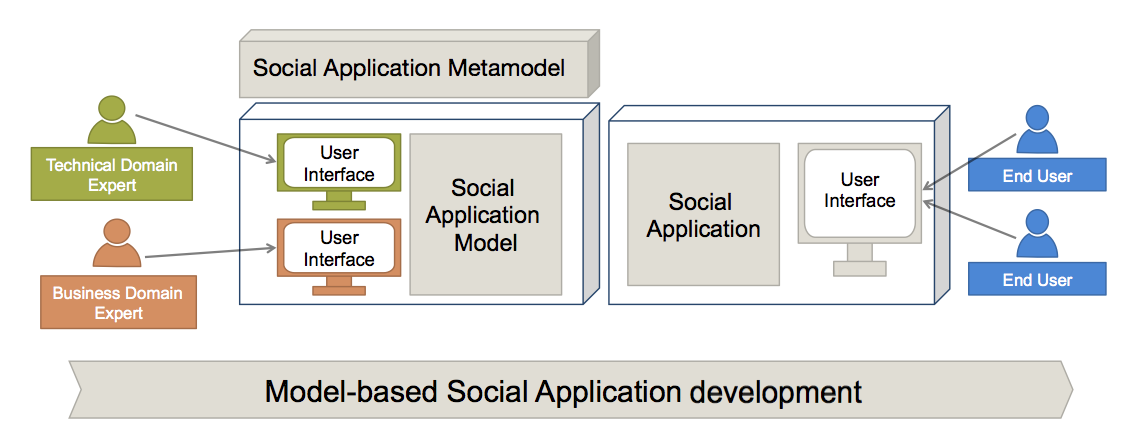Enterprise 2.0 introduces the social features stemming from Web 2.0 to the context of enterprises. Companies employ this social software to improve the information sharing between employees and to allow faster and easier access to information. This informa- tion needs to be structured in order to draw conclusions for decision-making from it. For example, a company might want to use information it gathered on customers to increase its customer relationship management capabilities. To ensure the possibility to store the information as structured data, data models are employed. Modeling envi- ronments are tools that support the task of data model creation and are, in the context of Enterprise 2.0, often connected to a database to automatically generate tables that will store and fit the data. Some social applications have been developed that serve this need in the form of a web platform. Examples are Drupal, Podio and Tricia. They provide both, the capability to store and view the information and the possibility to create data models. But as many enterprise applications, such modeling environments often suffer from too complex user interfaces. In this work, an integrated modeling environment for social enterprise applications will be introduced and prototypically implemented. It allows non-modeling experts with knowledge of the their business do- main to create data models able to store the data arising in their domain. To achieve a low user interface complexity, a client-server architecture is employed to separate modeling concerns from other functionalities of a social enterprise application into a dedicated client.
